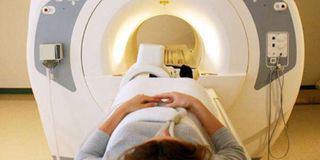Why breast MRI is essential

In younger women and women with dense breasts, MRI is effective in the detection of what are known as multicentric cancers, meaning breast cancers involving two or more distinct primary tumours, usually in different quadrants of the breast. PHOTO | FILE
What you need to know:
- MRI-detected multicentric cancers were found mostly in patients with heterogeneously dense or extremely dense breasts. However, MRI also detected additional disease in 19 percent of patients with fatty or scattered fibroglandular tissue.
ADDITIONAL BREAST CANCERS found using MRI are sometimes larger and potentially more aggressive than those found using mammography, according to a study published online in the journal Radiology, the Radiology Society of North America said on Wednesday in a press release.
Researchers said that in some cases, MRI findings of additional cancers not seen using mammography may necessitate a change in treatment.
In younger women and women with dense breasts, MRI is effective in the detection of what are known as multicentric cancers, meaning breast cancers involving two or more distinct primary tumours, usually in different quadrants of the breast. However, there has been some debate about the clinical significance of multicentric cancers found using MRI.
To learn more, the study’s lead author Chiara Iacconi from the Breast Unit at USL1 Massa-Carrara in Carrara, Italy, and her colleagues reviewed records from 2,021 patients with newly diagnosed breast cancer who underwent biopsy after preoperative MRI.
Of all the patients, 285, or 14 per cent, had additional cancer detected using MRI that was hidden from view on mammography. In 73 of those 285 patients, or 25.6 per cent, MRI identified at least one additional cancer in a different quadrant of the breast than the index cancer, or the cancer detected using mammography and or breast palpation. These multicentric cancers were larger than the known index cancer in 17 of the 73 patients, or 23.3 per cent. In addition, the MRI-detected multicentric cancers were greater than 1 centimeter in size in 25 per cent of the 73 patients.
The additional MRI-detected multicentric cancers were found mostly in patients with heterogeneously dense or extremely dense breasts. However, MRI also detected additional disease in 19 percent of patients with fatty or scattered fibroglandular tissue.
The research paper is titled Multicentric Cancer Detected at Breast MR Imaging and Not at Mammography: Important or Not?





